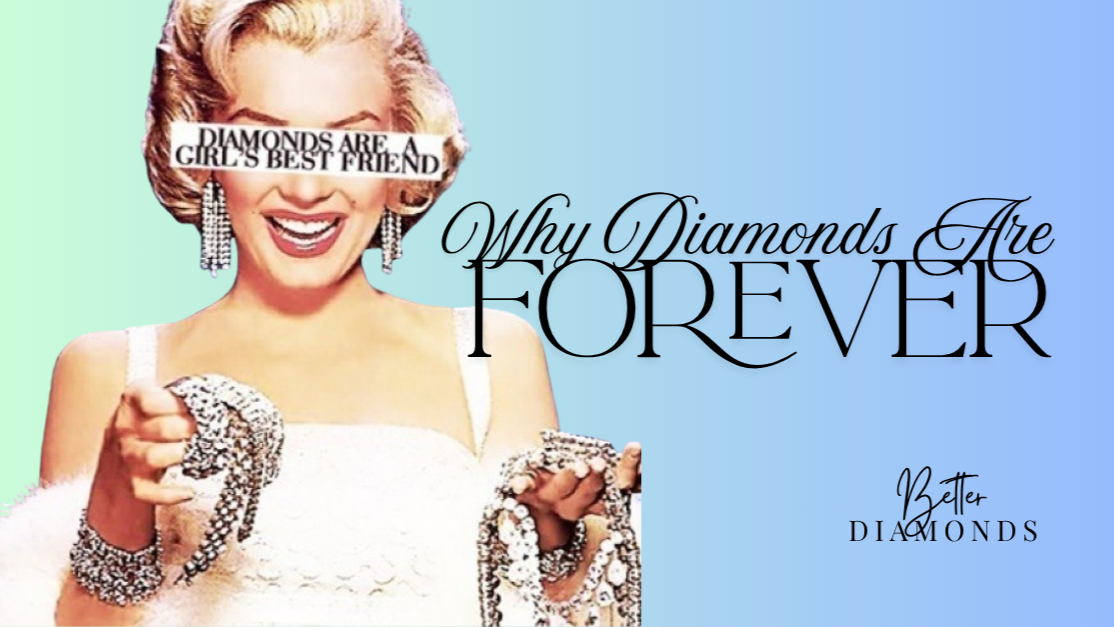In a world full of stones, why did we choose the diamond to represent forever?
It wasn’t the rarest. It wasn’t the most colorful. It wasn’t even the most expensive — until we made it so.
But it had one advantage the others didn’t: It couldn’t be broken.
🔹 The Simplicity Behind “A Diamond Is Forever”
In 1947, De Beers needed a reason to sell more diamonds. So they did what all great stories do — they made a metaphor feel inevitable.
“A Diamond Is Forever.”
It didn’t need poetry. It didn’t need facts. And it was true.
And here’s the genius: they didn’t market rarity — they marketed resilience. Not how deep you had to dig, but how long it would last once you did.
The diamond wasn’t pitched as beautiful. It was pitched as indestructible.
They are the hardest know mineral on Earth. Rated 10/10 on Mohs scale.
And what do we want most to be indestructible? Love.
A diamond doesn’t bend, scratch, or break. It can’t be crushed.
Diamonds outlasts almost everything — just like the kind of LOVE we hope for.
Diamonds became a metaphor for the kind of bond we idealize: strong, unyielding, unbreakable — but still radiant.
Princess Diana's famous blue sapphire ring
💍 Why Not Rubies or Sapphires?
Rubies have fire. Sapphires have royalty. Emeralds have mystery.
Sapphires & Rubies rated 9 on Mohs scale are tough, but not the toughest.
In fact, all three are rarer than diamonds in gem-quality form. But that was exactly the problem.
To give the world an engagement ring, you needed a gem that could be found, cut, set, and sold — at scale.
Production-quality rubies and emeralds were too scarce. Diamonds weren’t rare — they were rare enough to be controlled. And durable enough to wear every day.
That’s what made the De Beers campaign so effective. It wasn't built on lies — it was built on the one quality that mattered most: Durability as destiny.
🧪 What About Cubic Zirconia?
Yes — natural cubic zirconia is technically rarer in Earth’s crust than diamonds. But no one proposed with CZ.
Not because it wasn’t rare. But because it wasn’t built to last.
CZ scratches. It dulls. It fades in under a year of real wear. It doesn’t symbolize forever — because it can’t survive it.
The diamond earned its place not through scarcity, but through endurance.
Rarity without demand and relevance has no value
💡 Rarity Isn’t the Same As Value
Most people still think diamonds are rare. But they’re about as rare as a mid-tier luxury car.
You won’t see one on every street — but you also won’t stop to stare.
Rarity only creates value when it’s paired with desire — and backed by demand. If no one wants it, or even knows it exists, it stays cheap — no matter how rare.
De Beers didn’t control supply because diamonds were hard to find. They controlled it to make diamonds feel hard to find.
And for decades, it worked.
Until lab-grown diamonds came along — offering the same beauty, strength, and symbolism — without the illusion of scarcity.
🚀 Enter the Disruption
Today, lab-grown diamonds are chemically identical to mined ones.
- Same Sparkle
- Same Toughness
- Put through the Same Pressure — came out sparkling & intact just like a mined diamond.
The only real difference?
Lab-grown diamonds aren't pretending to be rare.
They don’t need to be. They’re strong. Beautiful. Ethical. Affordable.
In fact, if we applied today’s values — sustainability, transparency, fairness — lab-grown would’ve been the first choice, not the disruptor.
🧭 The New “Forever”
So what’s the takeaway?
It’s this:
Diamonds were never about what’s underground. They were always about what lasts above it.
They were never about price. They were about promise.
Lab-grown doesn’t change the meaning of a diamond. It restores it — to something that’s strong, honest, and built for legacy.
Because in the end, love isn’t rare because it’s hard to find. It’s rare because when it’s real, it doesn’t break.
Just like the stone that was meant to symbolize it.
Explore More Here: https://www.linkedin.com/pulse/why-diamonds-became-symbol-forever-what-really-means-today-anand-ps8zc



